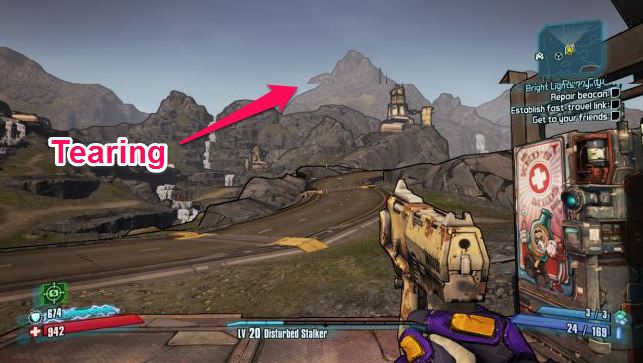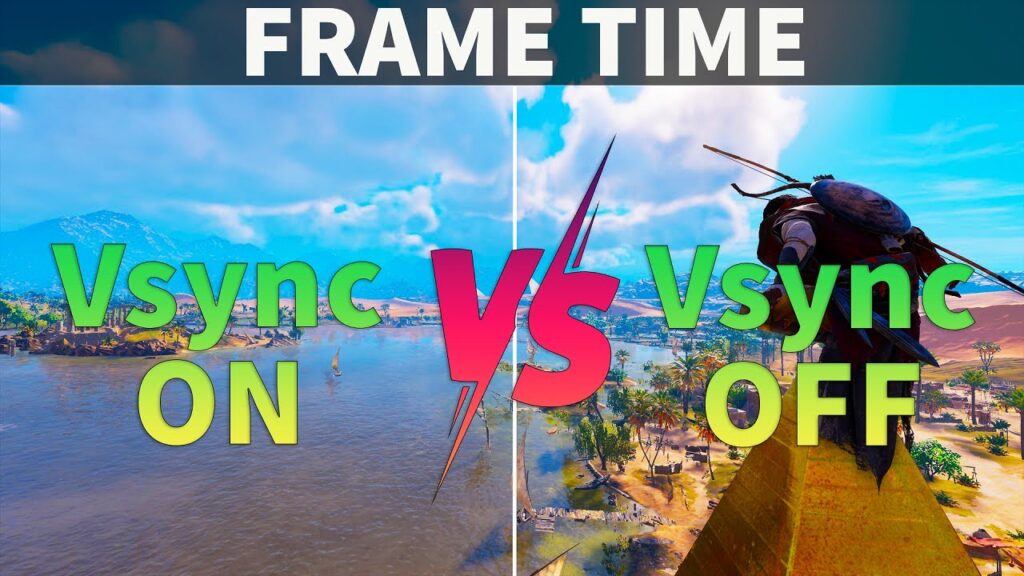When you’re in the middle of a game, there’s nothing more frustrating than screen distortions. When you do this, the screen crashes and looks like a puzzle in the wrong order. After a while, frequent screen distortions can frustrate the player and take them out of the world they’re playing in, making the game less enjoyable. But, now you would be happiest to know that there’s a technology called VSync that counteracts this. On that note, we will be discussing the topic, of Vsync ON or OFF in games.
So, what’s Vsync?
VSync or Vertical Sync is designed to create a smooth gaming experience by matching the frame rate used in-game to the frame rate supported by your monitor. This can help prevent screen tearing and other visual interruptions in a game’s graphics and ensure a smooth visual experience.
When a GPU renders a scene, it instructs the monitor to stitch together the frames of a scene to ensure smooth video playback. You can think of it as a flip book that creates the illusion of motion. The graphics processor outputs a certain number of frames per second, depending on system performance and game requirements. Also, your monitor must keep up with the number of frames generated by the GPU. The maximum number of frames a GPU can generate depends on its refresh rate. Thus, a monitor running at 60 Hz can display up to 60 FPS.

Here’s something on RPG Games for you !! ~~>
How does Vsync work?
V-sync is used to combat screen distortions. It accomplishes this by preventing the GPU from changing display memory until the monitor has completed its current refresh cycle, essentially delaying the arrival of new data until it’s ready.
Also, VSync synchronizes the rendering of frames on the screen only when a refresh cycle is complete, using a combination of double buffering and page flipping, so no tearing should occur when VSync is enabled.
Is Vsync required for Gaming?
By synchronizing the refresh rate used by your graphics processor and your monitor, you can prevent your monitor from being completely overloaded by instructions it cannot handle. This will cause distortions, such as screen tearing, to appear on your screen. This isn’t essential for gameplay, but it can help prevent such problems from occurring.
By limiting the refresh rate and making sure that both the GPU and the monitor match that rate, you can ensure a smooth image. This may mean that you’ve to reduce the frame rate in your game a bit, but this should improve the overall experience. This is especially true if you frequently play fast-paced games. In such games, an out-of-sync frame rate can put a huge strain on the monitor. You can prevent this by enabling VSync in your manufacturer’s settings menu.

Vsync for Windows 10
VSync may sound technical, but for most gamers, it usually improves the quality of gameplay by providing faster, clearer video quality and limiting the number of errors. Thus, turning VSync on can help you optimize Windows 10 for gaming. Note, if you’ve trouble, you can set up on a gaming platform like Steam. Now, coming back to the topic, let’s proceed.
For AMD Graphics:
If you’re an AMD graphics card, you can enable or disable VSync using the following steps:
- Click on the Start menu > AMD Radeon Settings > Games > Enable or Disable the option of “Wait for Vertical Refresh”.
- That’s it!
For Intel HD Graphics:
In Intel HD Graphics, here’s the process that you need to follow:
- Go to the Start menu > Intel HD Graphics Control Panel > 3D General Settings.
- Thereafter, go to Custom Settings > Enable or Disable the Vertical Sync option.
- That’s it! Enjoy 🙂
For NVIDIA Graphics:
To enable or disable Vsync of NVIDIA Graphics for Windows 10, here’s what you should do:
- Open the Start Menu > Go to NVIDIA Control Panel.
- Then, click on Manage 3D Settings > Vertical Sync > Enable/Disable.
Alternatively:-
- Right-click on your desktop > NVIDIA Control Panel.
- Thereafter, click Manage 3D Settings under the 3D Settings tab > Global Settings > Vertical Sync.
- Next, either select “ON” or “OFF” to enable/disable Vsync as per your wish.
- Finally, after you have adjusted your settings, click the Apply button to apply your Vsync settings.
- That’s it! Enjoy the adaptive syncing mode 🙂

Vsync ON or OFF in Games — Alternate Technologies ~>
There are many similar names as VSync that are available. Many of them offer the same functionality but differ in certain other features. For example, NVIDIA’s
Adaptive VSync works similarly to VSync in that it limits the output of FPS to match the refresh rate of a monitor. However, it works harder than VSync to prevent performance lags caused by varying refresh rates. Basic VSync functionality has a hard time overcoming this problem.
NVIDIA’s Fast Sync does an incredible job of preventing screen tearing and input lag while keeping latency to a minimum. Some gamers prefer to disable VSync as latency can increase to over 100ms, which Fast Sync can prevent.
Another one is the Smooth VSync which is designed to reduce stuttering when both VSync is enabled and a Scalable Link Interface (SLI) is active. In this case, two GPUs are used simultaneously on a single PC. Smooth VSync subtly lowers the frame rate of a game and only increases the frames per second when the performance is sustainably higher than the monitor.
Want to know about the origin of “Winner Winner Chicken Dinner”? Off you go
WRAPPING UP!! Vsync ON or OFF in Games! ~~>
In this post, I think I have done well enough to have given you ample solutions; on Vsync ON or OFF in games. All the methods above are literally very simple and even a beginner can thus easily follow them. So, try your hands on any of these quick ways to resolve the issues and fulfill your wish. With that, until the next time, see ya !! Goodbye !! ~~> ~~>
:: ~~> ~~> :: ** :::::: ** :: )) ** :: ** (( ~~> ~~>
